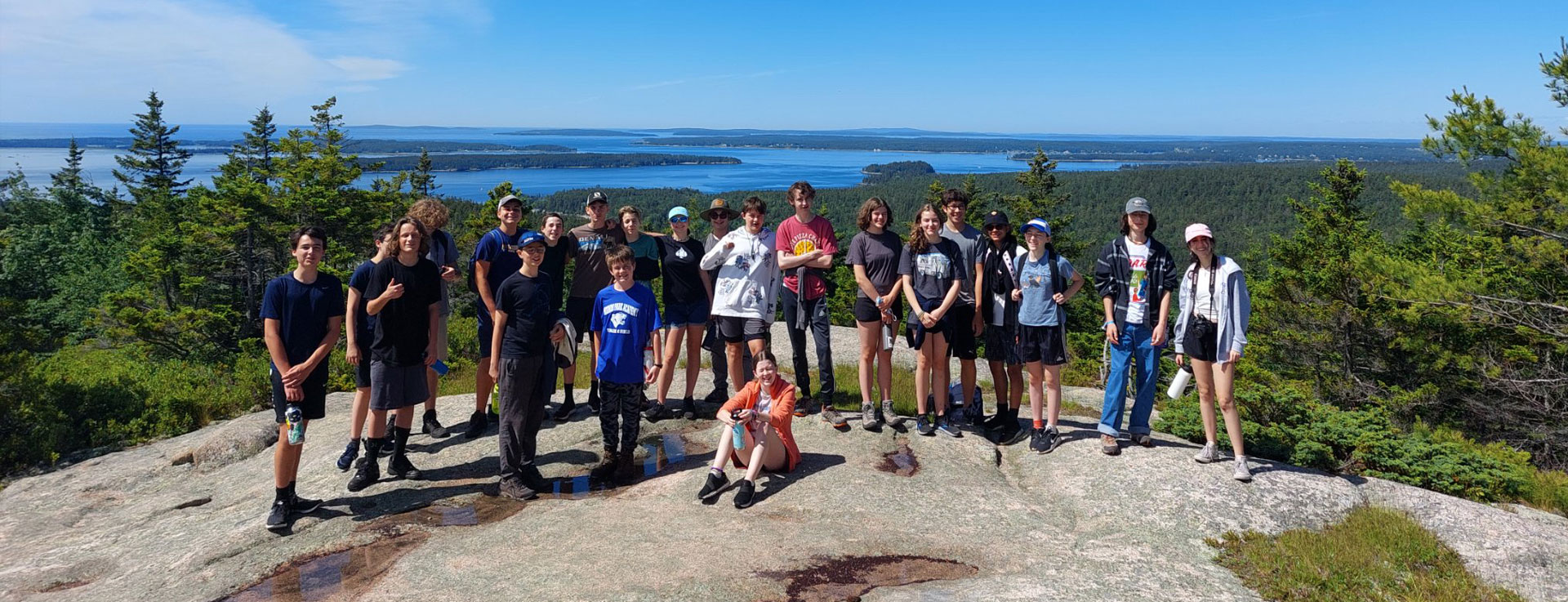
Intermediate Program Sample Lesson
General description of lesson:
Bring a tidal pool indoors! Working in pairs, students will set up and maintain a 10-gallon cold saltwater tank during their two-week stay with us. After filling the tank with water, you will re-create home for some rocky shore organisms. All animals are returned to their original environment before your session ends. Just select a picture to learn more about each member of this food chain.
Did you know…
sea stars are members of the phylum Echinodermata which means “spiny skin?” They have a well-developed water vascular system that creates a hydraulic system for their tube fee to hold to rocks or animals that they are preparing to eat. Once they have managed to open a mussel’s shell, the sea star will put its stomach into the shell and use a strong acid to break it down. Then, it will wrap its stomach around the soft tissue and put its stomach away. The ultimate take-out restaurant! Like some other Echinoderms, a sea star can also regenerate or grow back arms that are lost.
Plankton
Did you know…
the word plankton is from the Greek word meaning “to wander?” It is appropriate because these tiny, often microscopic animals and plant-like organisms seem to wander through the water column. Many marine animals begin as plankton an grow up (called Meroplankton) while others stay planktonic for their entire lives (known as Haloplankton). THey may be small but they make up the base of the food pyramid and, without them, the rest of the pyramid would fall apart. They are the food source for primary consumers that filter feed. These can include the mussels and barnacles in your tank al the way up to baleen whales, such as a Blue Whale…the largest animal on earth.
Mussels
Did you know…
the Blue Mussel has a foot? They use the foot to move from one place to another like many other mollusks. Once they reach their destination, the mussel releases a sticky thread-like substance called a byssal thread. It will hold the mussel to the rock through the strongest of waves. Bivalves, like the mussel, are filter feeders. They siphon food form the water eating plankton and other material that might float by then. The mussel shells act as a home for barnacles, limpets and snails.
Rock Crab
Did you know…
the Rock crab can be up to 5 inches wide and is found as deep as 2600 feet? Like other crustaceans, the Rock Crab will molt when its body gets too large for its shell. The back edge of the shell will crack open and the crab will will move backwards out of it. It will then be consider a soft shell crab and is susceptible to being eaten by other crustaceans. Crabs are scavengers and will eat leftovers from other animals as well as dead and dying animals. They are the garbage haulers of the ocean.
Barnacles
Did you know…
that barnacles live most of their lives on their heads? This crustacean begins life as plankton and then, when it “sees” a good spot (they can see light and dark), it will settle down to live life on its head. Barnacles can survive on any solid surface that gets wave action periodically which means they live on rocks, pilings, boats, snails, crabs and whales. WHen the tide comes in, they open their trap door and use their feathery feet to grab plankton out of the water. When the tide goes down, they keep one drop of water and close their door…that drop of water will provide enough dissolved oxygen to survive until the next tidal change.
Algae
Did you know…
Algae are not plants but rather are included under the Kingdom Protoctista? The color of each alga and how deep they can live in the water is determined by the wavelength that they need to photosynthesize. The green algae live in the shallowest water whereas “the reds” live in the deepest water. In the middle, and often covering a large portion of the rocky shoreline, you’ll find the “browns” (called browns even though they are often an olive-green color). Algae supplies a large percentage of the oxygen we breathe and are used in many of the foods and medicines we use daily. The next time you brush your teeth, eat some good ice cream, or take a deep breath, thank the algae.

